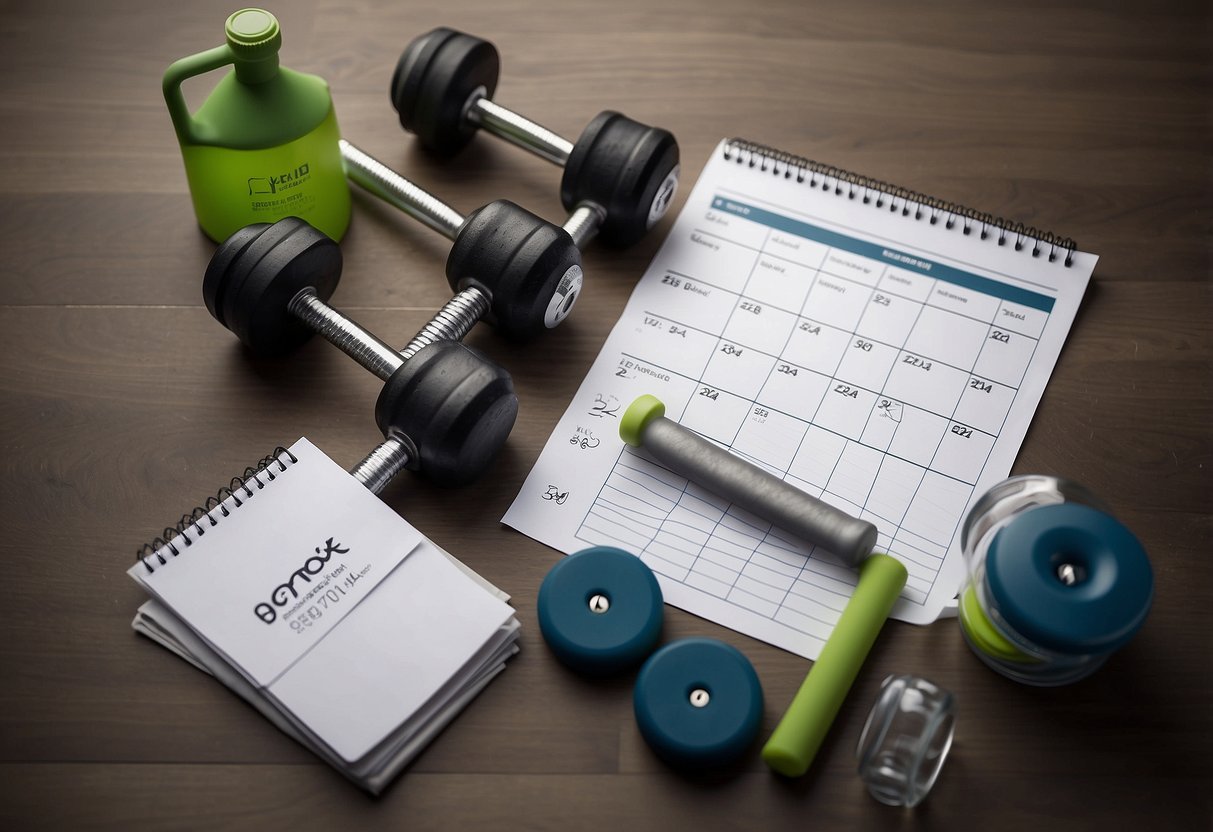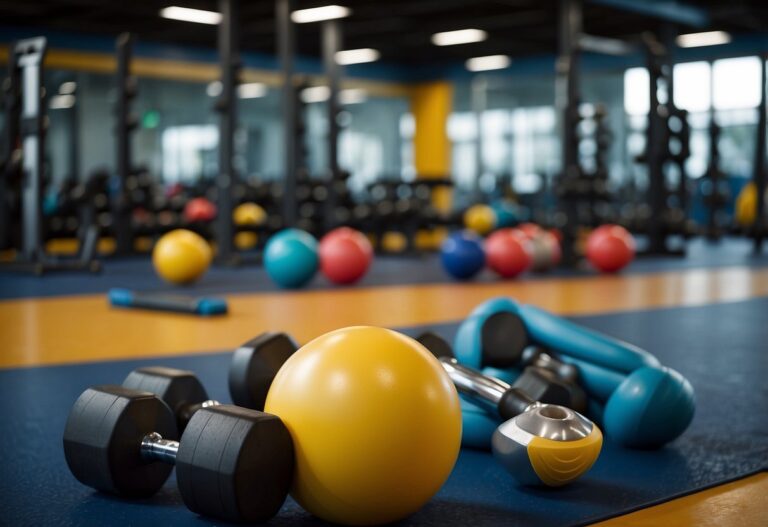Starting a workout plan can feel overwhelming, but with the right tips, you can set yourself up for success. Whether you’re a beginner or looking to refine your routine, having a guide can make all the difference. What are the key elements of a workout plan that ensure you stay motivated and see results?

You’ll find that a well-structured workout plan can lead to significant improvements in your fitness levels. Personalising your routine to fit your goals and lifestyle is crucial. By incorporating varied exercises and staying consistent, you’ll create a balanced and effective workout regimen.
Set Clear Goals
When starting a workout plan, it’s important to set clear goals. These goals guide your progress and keep you motivated.
Begin with specific objectives. Instead of saying, “I want to get fit,” say, “I want to run a 5k in under 30 minutes.”
Use the SMART framework. Your goals should be Specific, Measurable, Achievable, Relevant, and Time-bound. For instance, aim to exercise for 30 minutes three times a week.
Remember to be flexible. As you progress, you might need to adjust your goals. It’s okay to shift your targets to stay on track and feel successful. Being adaptable ensures long-term success and keeps you engaged in your fitness journey.
Writing down your goals helps. Keep a fitness journal or use a mobile app to track your progress and stay accountable.
Stay realistic. Don’t set goals that are too hard to reach. Start small and build up your targets as your fitness improves. This way, you are more likely to stick with your plan.
Asking yourself questions can help refine your goals. Think about why you want to get fit and what specific outcomes you want to achieve.
Clear, well-defined goals are essential for a successful workout plan. They guide your efforts and provide a sense of purpose and direction.
Mix Up Your Routine

Mixing up your workout routine helps keep things interesting and targets different muscle groups. When you change exercises, you distribute the exercise “stress” evenly, preventing overuse of any single group of muscles. This allows you to work out more often and for longer periods.
Cross-training is highly recommended by the American Council on Exercise. It involves combining different types of exercises like strength training, cardio, and flexibility workouts.
Another way to mix up your routine is to vary the number of sets and reps you do. For example, you can start with higher reps and lower weights, then gradually increase the weights while reducing the reps, as suggested by Muscle and Strength.
Consider trying new classes or instructors. This could mean switching from a yoga class to a spin class or trying a new instructor who might offer a different style or focus, as highlighted in this Remix Fitness article.
You can also adjust the time of day you exercise. Sometimes, a morning workout can feel completely different from an evening session, giving you new energy and motivation.
Don’t forget to include a proper warm-up and cool-down in your new routine. Warming up, like doing 5-10 minutes of jumping jacks or running, prepares your body for the workout and helps prevent injuries.
Mixing up your routine can also help break through plateaus and keep you excited about fitness. Don’t be afraid to experiment and find what works best for you.
Maintain Proper Form
To get the most out of your workouts and avoid injuries, maintaining proper form is key.
When lifting weights, remember to breathe correctly. Breathe out as you lift and breathe in as you lower. This helps stabilise your core and supports your spine.
For exercises like the lat pull-down, it’s important to lead with your pinky fingers. This helps target the middle deltoids better. Keep your elbows raised and lower the weight under control.
When running, keep your posture upright and relaxed. Focus your eyes about 10 to 20 feet ahead. Relax your face, shoulders, and arms to prevent unnecessary tension.
Incorporating these tips can make a big difference in your form and prevent injuries. For more detailed guidance, check out this article.
Stay Hydrated
Staying hydrated is crucial for any workout plan. Remember to drink water before, during, and after your workouts. Proper hydration helps maintain your energy levels.
Before starting your workout, try to drink 16-24 ounces of water. Carry a reusable water bottle; it’s a simple way to remember to drink regularly throughout the day.
During intense sessions, aim to sip water every 15 minutes. It helps you avoid dehydration and keeps your performance steady.
Finally, after exercising, replenish with another 16-24 ounces. This helps your body recover and prepares you for the next session. If you often forget to drink, set reminders on your phone. It’s a small step that makes a big difference in how you feel and perform.
Get Enough Sleep

Getting enough sleep is vital for any workout plan. Aim for 7-9 hours of sleep each night to help your body recover and build muscle. A good night’s sleep can also improve your focus and energy levels during workouts.
Try to maintain a consistent sleep schedule. Going to bed and waking up at the same time every day helps regulate your body’s internal clock.
It’s also important to create a relaxing bedtime routine. This could include reading a book, taking a warm bath, or meditating. Avoid electronic devices before bed as they can disrupt your sleep.
According to the Sleep Foundation, just 30 minutes of moderate exercise per day can alleviate anxiety and help you sleep better at night. This can mean something as simple as a brisk walk or a light jog. You don’t need to overdo it.
Track Your Progress
Tracking your progress is key to staying motivated and reaching your fitness goals.
Progress photos are a great way to see changes over time. Take photos from multiple angles every few weeks.
Keeping a workout journal helps you log your exercises, weights, and sets. This can be as simple as using a notebook or an app like Fitbod.
Pay attention to how your clothes fit. Notice if they become looser or tighter as your body changes. This can be a clear sign of progress.
Using a fitness tracker or app tracks your steps, heart rate, and more. This data can give you insights into your activity levels.
Incorporate Rest Days
Rest days are essential for any workout plan. They help your body recover, heal, and get stronger. Without rest, you risk overtraining, which can lead to injuries. Aim to schedule at least one to three rest days per week.
Active rest days can be beneficial. Light activities like walking or stretching keep your body moving without adding stress. This can help in muscle recovery.
Consider your fitness goals when planning rest days. If you feel sore or fatigued, it’s a sign that your body needs a break.
Listen to your body. Rest when needed to stay healthy. For more detail on rest days, you can visit howto.fitness and Peloton’s guide.
Warm Up Beforehand
Warming up before exercise is essential. It prepares your body for physical activity and can reduce the risk of injuries.
Start with simple moves like jumping jacks or a jump rope. These will get your heart rate up quickly.
Another great exercise is the bear walk. Start on all fours and move forward, keeping your back flat. This warms up your shoulders and legs.
Stretching is also important. Try reaching down to touch your toes or doing high leg kicks. Always keep it slow and controlled.
Remember, a proper warm-up should last around 5-10 minutes. Get your muscles ready and enjoy a safer, more effective workout.
Cool Down Afterwards
After a tough workout, it’s important to cool down properly. This helps your body recover and reduces muscle soreness.
Stretching is a key part of a cool down. Focus on the muscles you’ve worked the most. Simple static stretches or yoga poses can greatly help.
Walking slowly or using a cross-trainer at a low intensity for a few minutes can also aid in gradually bringing your heart rate back to normal.
Consider adding some gentle Pilates or yoga. This will improve your flexibility and mobility.
Always take the time to cool down—your body will thank you!
Use Proper Equipment

When starting a workout plan, it’s crucial to know how to use proper equipment. Using equipment correctly not only maximises your results but also helps prevent injuries.
Start with the Basics: Begin with simple gear like dumbbells, resistance bands, and a stability ball. These are user-friendly and versatile for many exercises.
Gradually Progress: As you become more confident, you can add more complex equipment like barbells or machines. Understanding how to use each piece properly will help you target the right muscle groups effectively.
Maintain Good Posture: Always keep your spine aligned and shoulders back. This is especially important when lifting weights or using machines.
Engage Your Core: Stabilise your body by keeping your core muscles engaged. This provides a solid foundation and helps you maintain balance.
Seek Guidance: If unsure about any equipment, don’t hesitate to ask a trainer. It’s better to get advice than risk misuse. You can also find good tutorials on sites like Sweat.
Be Flexible: Sometimes, someone else might be using the equipment you need. Have a backup exercise in mind to keep your session flowing smoothly.
Remember, your safety and effectiveness rely on knowing how to use equipment properly.
Understanding Your Fitness Goals
Knowing your fitness goals helps you create a tailored workout plan that suits your needs. It’s vital to evaluate where you are now and set clear, achievable objectives.
Assess Your Current Fitness Level
Before starting a workout plan, consider your current fitness level. Think about how often you exercise and the types of activities you do. You might ask yourself:
- Can I comfortably run a mile without stopping?
- How many push-ups can I do in one go?
- Can I touch my toes easily?
These questions help you figure out your strengths and areas for improvement.
You can also take measurements like weight, body fat percentage, and muscle mass. Use a fitness app or a notebook to track these metrics regularly. This can help you see progress clearly. If you’re unsure about your fitness level, consider getting a professional assessment from a personal trainer.
Define Your Workout Objectives
Decide what you want to achieve with your fitness plan. Whether it’s losing weight, building muscle, or improving overall health, having clear goals is essential. Be specific.
Instead of saying, “I want to lose weight,” set a target like, “I want to lose 10 pounds in three months.”
Break down your goals into smaller, actionable steps. For instance, if you want to increase your strength, plan specific exercises like squats and bench presses. Also, set time-bound goals. Committing to exercising for 30 minutes a day, five days a week can keep you accountable.
Lastly, align your goals with your lifestyle. Your plan should fit into your daily routine without causing stress. If you have a busy schedule, opt for shorter, more intense workouts, like high-intensity interval training (HIIT). This helps you stay on track without feeling overwhelmed.
Creating a Balanced Workout Routine
Creating a balanced workout routine involves combining various types of exercises and organising your workouts throughout the week. This approach helps ensure you target all major muscle groups while allowing time for recovery.
Incorporating Different Types of Exercise
Incorporating different types of exercises into your routine is essential for overall fitness. Start with cardio exercises like running, biking, or swimming. These boost your heart health and stamina. Aim for at least 150 minutes of moderate or 75 minutes of vigorous cardio each week.
Include strength training exercises to build muscle and improve bone density. Use free weights, resistance bands, or bodyweight exercises like pushups and squats. Target all major muscle groups, performing 2-3 sets of 8-12 reps per exercise.
Don’t forget flexibility and balance exercises such as yoga or Pilates. These improve your range of motion and reduce the risk of injury. Spend a few minutes on flexibility exercises after every workout session.
Finally, add in some high-intensity interval training (HIIT) for a great way to mix things up. HIIT involves short bursts of intense activity followed by rest periods. This can be as simple as sprinting for 30 seconds followed by a minute of walking.
Structuring Your Weekly Workout
Structuring your weekly workout ensures you get a balanced approach without overworking any specific muscle group. Start by setting a weekly goal, such as working out 4-5 days a week.
- Monday: Strength training (upper body)
- Tuesday: Cardio (running or cycling)
- Wednesday: Rest or light activity (walking or stretching)
- Thursday: Strength training (lower body)
- Friday: Cardio (swimming or HIIT)
- Saturday: Combination (yoga or Pilates)
- Sunday: Rest
Switching between different types of exercises keeps your routine fresh and targets a variety of muscle groups. Always allow at least one rest day to give your muscles time to recover. Taking a day off can help prevent injuries and improve your performance when you return to your workouts.
Ensuring Proper Nutrition and Hydration
Staying well-nourished is key to boosting your workout performance. Proper nutrition ensures you’re energised and ready to take on any exercise routine.
Pre-Workout Nutrition
Before you start, eat a balanced meal. Aim for a mix of carbohydrates, proteins, and a bit of fat to sustain your energy. An example is a banana with peanut butter on whole grain toast.
During Your Workout
For longer sessions, especially over an hour, consider bringing along some easy-to-digest snacks. Energy gels or a banana can keep you in top form. Remember to sip water regularly to avoid dehydration.
Post-Workout Recovery
After exercising, your body needs protein to repair muscles and carbohydrates to restore energy. A simple mix like a chicken sandwich, smoothie with protein powder, or a yoghurt pot can work wonders.
Hydration Tips
Hydration is just as important as nutrition. Drink water throughout the day, not just when you’re thirsty. During exercise, take in small amounts regularly. In hot conditions, or if you’re sweating heavily, use sports drinks to replenish lost electrolytes.
Guidelines for hydration:
- Adults: 6 to 12 ounces every 20 minutes of activity
- Teens: 11 to 16 ounces every 20 minutes
- Kids: 3 to 8 ounces every 20 minutes
These amounts help ensure you’re not dehydrated, which can hinder your performance and recovery.
Avoiding Common Pitfalls
Don’t wait until you’re thirsty to drink. Thirst is a late sign of dehydration. Similarly, don’t skip your pre-workout meal or eat too much too close to the exercise, which can cause discomfort.
By following these tips, you can keep your body in peak condition, ready for each workout session.







